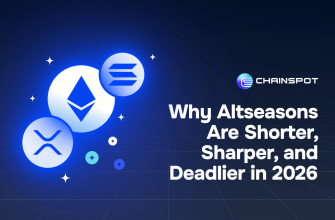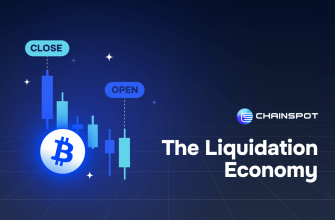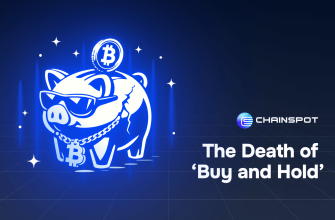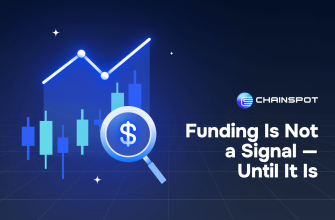- 1 | Jim Cramer in One Paragraph
- 2 | The “Cramer Bounce” and the Birth of the Reverse Meme
- 2.1 What the Data Say
- 2.2 Memes Become Products
- 3 | Why the Indicator Exists
- 4 | Case Studies Worth Knowing
- 5 | Can the Reverse Signal Be Traded?
- 5.1 Issues
- 5.2 DIY Tracker
- 6 | The Indicator Meets Crypto
- 7 | Risk-Management Lessons for Any Trader
- 8 | Logistics: Moving Money Cheaper With Chainspot
- 9 | Bottom Line
Most Wall Street talking heads move markets for a few minutes. Jim Cramer is different: whole trading memes bloom around fading—or blindly following—his picks. Over twenty years on CNBC’s Mad Money he’s cheered winners, cheered losers, and built a paper trail sturdy enough for quants to trade against. That habit birthed the tongue-in-cheek “Jim Cramer Indicator”: when Cramer’s bullish, short it; when he’s bearish, long it. This 2 500-word guide digs into the man, the stats, academic studies, the short-lived Inverse Cramer ETF, and how crypto traders can use the lesson—keep emotion in check, data on hand, and collateral moving cheaply through tools such as Chainspot, whose router still kicks back loyalty cashback on every swap.
1 | Jim Cramer in One Paragraph
Harvard grad, former Goldman analyst, hedge-fund manager (24 % CAGR from 1987-2001), co-founder of TheStreet.com, and since 2005 the frenetic host of Mad Money on CNBC. He turns company tickers into catch-phrases and viewers into day-traders . That mix of reach and certainty explains why a single bullish shout can spark the so-called Cramer Bounce—a brief pop that often fades within days.
2 | The “Cramer Bounce” and the Birth of the Reverse Meme
2.1 What the Data Say
Research cited by Investopedia shows the average Cramer-mentioned stock gains roughly 3 % the next session, then drifts back toward pre-show levels. AskMoney’s 2024 review put his long-term hit-rate near the coin-flip mark—~50 % . Uptrends.ai scraped a year of calls: bullish picks lost -2.7 % over two weeks on average; bearish picks fared worse at -6.9 %.
2.2 Memes Become Products
In 2023 Tuttle Capital listed two ETFs:
| Ticker | Strategy |
|---|---|
| LJIM | Long Cramer picks |
| SJIM | Short or inverse Cramer picks |
The more viral SJIM gathered headlines but only $2 m AUM; it lagged and shut down in early 2024 , even though Yahoo shows it briefly printed an 8 % YTD gain . Lesson: it’s hard to turn TV sound bites into systematic alpha at ETF scale.
3 | Why the Indicator Exists
-
Over-confidence bias. Cramer’s on-air certainty masks statistical noise.
-
Entertainment over rigor. He must fill airtime; nuance doesn’t rate.
-
Small-cap liquidity impact. Shouting tickers with thin floats moves price temporarily.
-
Revision lag. He rarely revisits every call, so losers fade from memory, winners headline.
Academics compare it to the “celebrity analyst” effect—signals move price, not value.
4 | Case Studies Worth Knowing
| Year | Call | Market Move | Outcome |
|---|---|---|---|
| 2021 | BUY Coinbase at $328 | IPO hype | Stock trades now ≈ $93 (-70 %) |
| 2022 | SELL Meta at $100 | Post-earnings panic | Meta back above $310 (+200 %) |
| Jan 2024 | Warned of “nasty Bitcoin sell-off” at $42 K | BTC rallied to $73 K by March | Reverse trade paid |
| Jul 2025 | “Loading up on Bitcoin as debt hedge” | He flipped bullish at $101 K | TBD |
5 | Can the Reverse Signal Be Traded?
5.1 Issues
-
Delay: ETF filings lag showtime; fills differ.
-
Topic drift: Cramer covers thousands of tickers; sample size per name is tiny.
-
Execution cost: Shorting illiquid names after a TV pop can be pricey; borrow fees kill edge.
5.2 DIY Tracker
Quants scrape Mad Money transcripts, tag bullish/bearish verbs, and run equal-weight baskets rebalanced weekly. Composer shows SJIM’s methodology still available for personal algos.
6 | The Indicator Meets Crypto
Cramer’s crypto takes swing wildly—bullish at $17 K (2020), bearish at $42 K (2024), bullish again at $100 K (2025). BeInCrypto says each pivot triggers Twitter’s “inverse Cramer” memes but has little lasting effect on BTC’s trillion-dollar cap .
Still, paying attention can help sentiment timing: a public bear rant near support often marks local bottoms.
7 | Risk-Management Lessons for Any Trader
-
Statistical edge > loud conviction. A flip-flopping guru is noise; follow data.
-
Size right. One Cramer-driven wick shouldn’t liquidate you. Use the 1 % rule.
-
Journal trades. Log why you faded or followed a call; refine.
-
Stay nimble. When sentiment shifts, capital must move chains fast—especially if your next play sits on Solana while funds rest on Ethereum.
8 | Logistics: Moving Money Cheaper With Chainspot
Cramer talk might tempt you into a quick rotation—say, dumping a TV-pumped tech stock, flipping to BTC, then bridging to Arbitrum for yield. Doing that in three steps burns gas. One Chainspot route bundles swap + bridge, finds the cheapest path, and sends 0.06 % cashback to your loyalty vault.
| Example 12 Jul | Legacy Path | Chainspot |
|---|---|---|
| Sell COIN ▶ USDC ▶ ETH▶ Arbitrum | $22 total fees | $9 all-in (+$2.70 cashback) |
Plus you can share a referral link and pocket 25 % of friends’ swap fees—handy when markets yo-yo on a loud TV call.
👉 Shift collateral smarter here: https://app.chainspot.io
9 | Bottom Line
The “Jim Cramer Indicator” is half joke, half cautionary tale: treat televised certainty with skepticism and trust tested rules instead. Fading every call blindly won’t make you rich—liquidity, costs, and timing matter—but tracking the noise can spotlight overheated sentiment. When you do pivot, keep slippage tiny and let tools like Chainspot re-route your funds while kicking back loyalty rewards. Trade the data, not the decibels.












